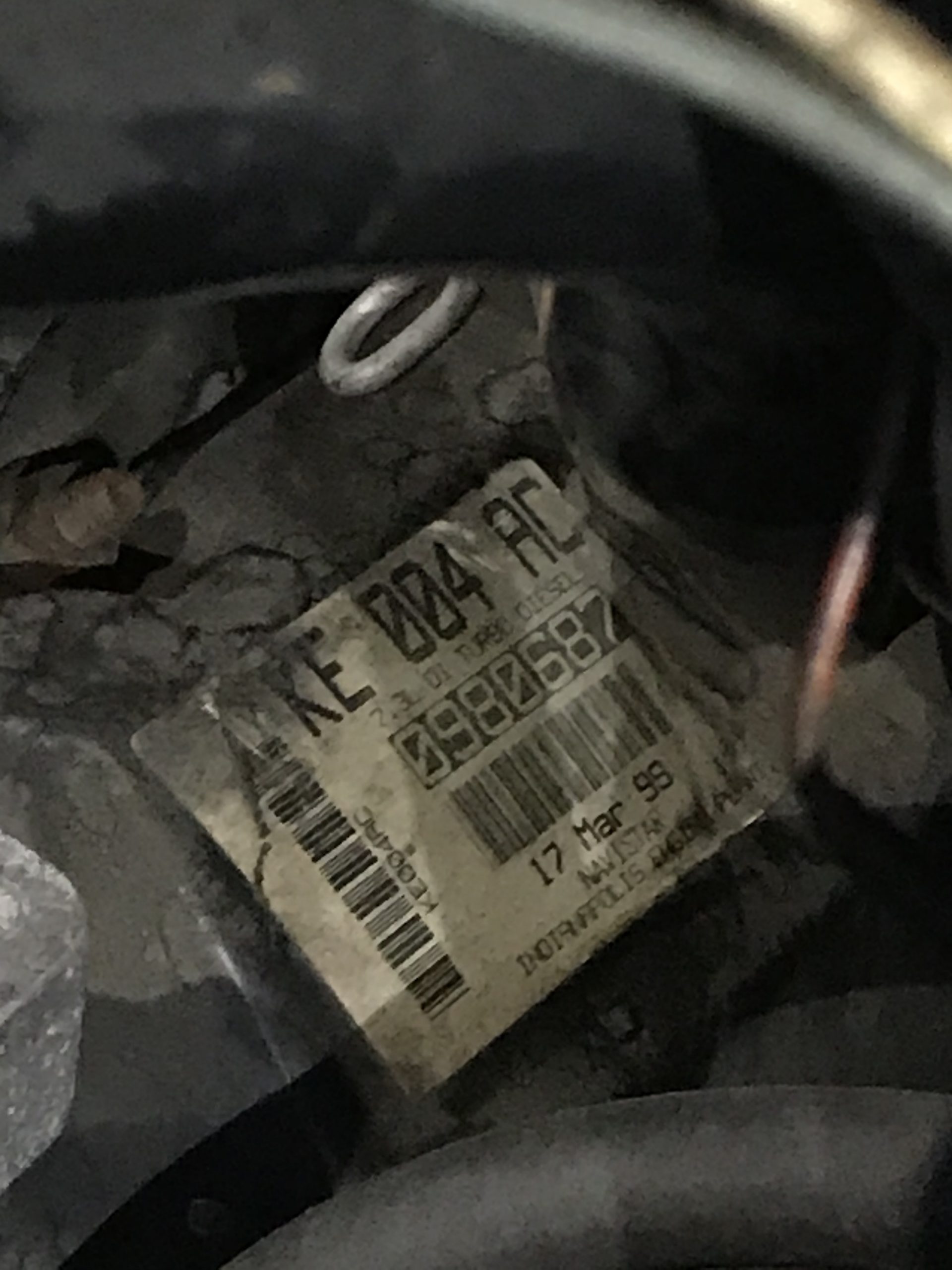Great question, well, 1999 was a split year. One of Ford’s greatest engines ever produced happened in 1999, the Navistar 444 cubic inch 7.3 Powerstroke Diesel engine also know as the million mile motor (there are examples out there) or more realistically the half a million mile motor; personally I think 250k miles is VERY realistic with proper maintenance and use. This amazing engine quickly disappeared and was replaced by what was possibly one of Fords…well not so great engines. So anywhere between 1999.5-2003 the 7.3 Powerstrokes’ were the most highly sought after engines with the 1999.5 -2000 being the sweet spot just due to the internal difference (IMO).
So how do you identify a 1999.5-2003 Powerstroke DI engine?
If your staring down a 1999 and you want to be able to tell the difference between an “E” or a “L” a couple of characteristics are dead giveaways for the 1999.5-2003 year. Please keep in mind that these are some characteristics. I’ve heard of “blended” E99 with L99 vehicles; meaning some parts of a E99 and a L99 were found on the same vehicle (E=early, L=late). I personally have not encountered any of these.
- Easiest way to 10 foot identify, is the transmission cooler (picture). Early 99 versions did not have these; which is good thing to have, your transmission keeps it cooler. Just be careful I have heard that some transmission coolers have been added when the ambulance conversion was created, I just couldn’t confirm.
- Check the drivers side valve cover for the identification sticker; most fall off but if you’re lucky it will be the easiest way to defiantly identify.

- The VIN is a quick identifier and the numbers are easy to read once you learn the characters value. The eighth place of the VIN is an “F” (444 cubic inch, 7.3L Powerstroke, OHV, DI Turbo Diesel), “P” (365 cubic inch, 6.0L Powerstroke, OHV, DI Turbo, V8, Diesel) and the tenth place is the year, “W”=E99; the “X”=L99, “Y“=”’00, “1“=’01, “2“=’02, “3“=’03…etc. Again, “E” is the Early version of the engine and the “L” is the Later.
Now that you have identified a 1999.5-2003 Powerstroke 7.3 rig so, what’s the big deal? Well…
- Injectors go from 120cc (AB) to 140cc (AD), more fuel mean it keeps cooler and runs more efficiently.
- The computer or PCM (Power-train Control Module) has been upgraded. Meaning the computer that controls the engine and transmission has better programming then it’s predecessor.
- Most of the 1999.5-2000 Powerstroke engines have forged connecting rods, compared to “cast pistons”. These versions are what I call the “unicorns“. Cast pistons are made from combining aluminum and other alloys with silicone where forged pistons are made out of a solid billet alloy. The advantage is that forged pistons are stronger and have the characteristics to be more reliable in high performance, higher heat and all around higher demand situations. Not saying that the cast piston found in the 7.3 is by any means not good. It could just mean that the use of the forged piston in the earlier versions of the is just overkill. It’s probably why they only used them for about a year and a half. I personally think that it really comes down to proper maintenance that will give longevity to any engine.
- Maintenance and durability. Cost of replacement of most wearable items or things that could fail are easily obtained financially and physically readily available.
- Larger intake runner (2” goes to 3”).
- A 15 degree swash plate on the E99 compared to a 17 degree swash plate on the L99 for the HPOP (High Pressure Oil Pump). The increase angle lengthens the stroke of the piston travel inside the HPOP which in return compresses the oil (which increases the volume) and increases power. Along with the power increase there are other various positive characteristics but I’m going to keep it simple.
- Passenger side airbag is standard.
- Some of the earlier versions of the were configured WITHOUT catalytic converters.
The list goes on. I’m just going to keep the list somewhat simple but, please don’t think that Powerstrokes previous to 1999.5 or after late 2003 and up are not suitable to make a good AmbulanceCamper.
These engines went through a few generation changes since 1994 and personally I feel they really were perfected in that 1999.5 to 2003 range. Previous to 1999.5 they did have less torque and horsepower but the advantage was the sheer simplicity of the configuration. It was a more a mechanical configuration in the earlier stages and, with that, less problems. I’ve seen early Powerstroke upgrades (turbo packages) that have seem to be running as strong or surpass the power of the 1999.5-2003 models but, with that comes a price tag of aftermarket parts and installation.